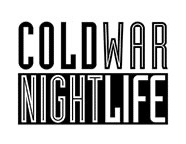[vc_row][vc_column][vc_column_text]
Improvising in a group, you have to accept not only the frailties of your fellow musicians, but also your own.
— Cornelius Cardew, “Towards an Ethic of Improvisation” (1971)
Sunroof, the collaboration between Daniel Miller and Gareth Jones, was originally a name for a series of occasional remixes and cover versions. The two legendary producers have worked together for nearly forty years, coming together under that name for one-off projects; particularly, with a nod to their krautrock influences. The first album together, Electronic Music Improvisions, Volume 1, took them in a different direction: sat together in a comfortable place, they developed material by playing modular synthesisers against each other. Instead of the programmed material they had shown their mastery of in tracks like their version of Can’s “Hero,” they developed an improvised approach that relied on hearing and responding to the sounds made as parallel operators.
This style is more familiar from the worlds of jazz and experimental acoustic music. Improvisational groups like AMM – the British experimental ensemble that has included John Tilbury, Cornelius Cardew, Keith Rowe, and Eddie Prevost – were an influence on the work of Pink Floyd and Paul McCartney. Cardew’s early experimental compositions (which drew in a young Brian Eno) were based on the responses of performers to each others’ actions. What he had observed was that people come into alignment through participation, but also that care needs to be taken to avoid any one voice dominating. In that respect, an improvised performance is a social act that requires presence and humility to succeed. Respecting the decay of other participants’ sounds is as important as introducing new ones.
Informal ‘sound’ has a power over our emotional responses that formal ‘music’ does not, in that it acts subliminally rather than on a cultural level. […] We are searching for sounds and for the responses that attach to them, rather than thinking them up, preparing them and producing them. The search is conducted in the medium of sound and the musician himself is at the heart of the experiment.
— Cornelius Cardew, “Towards an Ethic of Improvisation” (1971)

Sunroof (Photo: Paul Heartfield)
Miller and Jones appear to have come to a similar understanding. The conditions they set themselves for their second album, Electronic Music Improvisations, Volume 2, included beginning with unpatched modular systems. They would then begin to tease the machines into producing sounds, apply effects, and choose or dismiss the results in real time. To make this successful, they needed to be mindful of the ways that sounds combine and collide. To maintain balance, they needed to exercise restraint and be prepared to lean in at the right moments. The nature of the machines meant that they also had to accept the logic of electrical circuitry: the hand of chance cannot be forced entirely by the operator.
The eight tracks on the album have been subjected to minimal editing. Each traces a different path; the sounds blurring into each other like the colours of Jones’ cover painting. The growls of machines in “September” blend with gentle, sensitively-wrought signals that tease the listener. “January #2” finds a throbbing groove, providing a spine around which rhythms coalesce and dissolve. There are echoes of Miller’s work in Duet Emmo, and Jones’ solo work around the time of his recovery from cancer, but the improvisations reflect unique moments. From the standpoint of the listener, these are rich, layered works that reveal their textures through repeated listening. The man-machine interface produces sounds and effects that exist only for a moment – something that Cardew valued highly – but this recording brings us into the experience as best it can.
Of the release, Jones says, “I suppose this is the difficult second album. It took 40 years to make the first album and just nine months to create this one!” Miller adds, “We got on a roll and didn’t really stop recording once we had that momentum.” Electronic Music Improvisations, Volume 2, comes out on the Parallel Series of Mute on 17 February 2023 on limited edition white vinyl and digitally.
[/vc_column_text][/vc_column][/vc_row]

